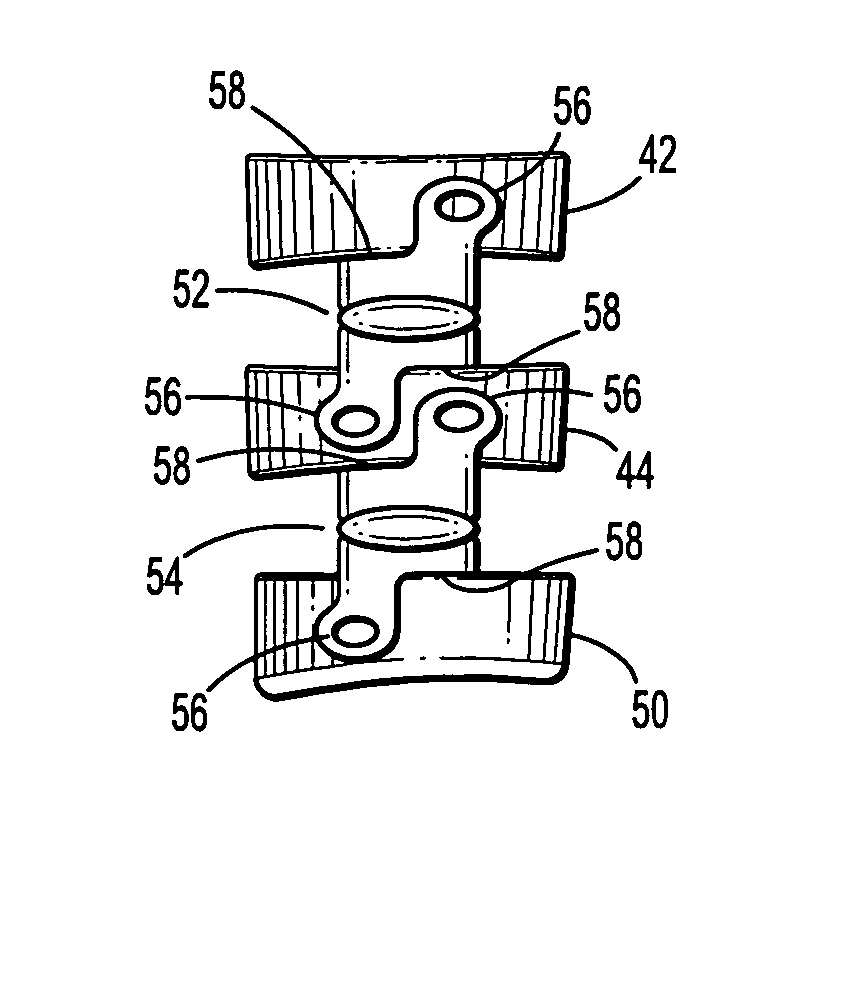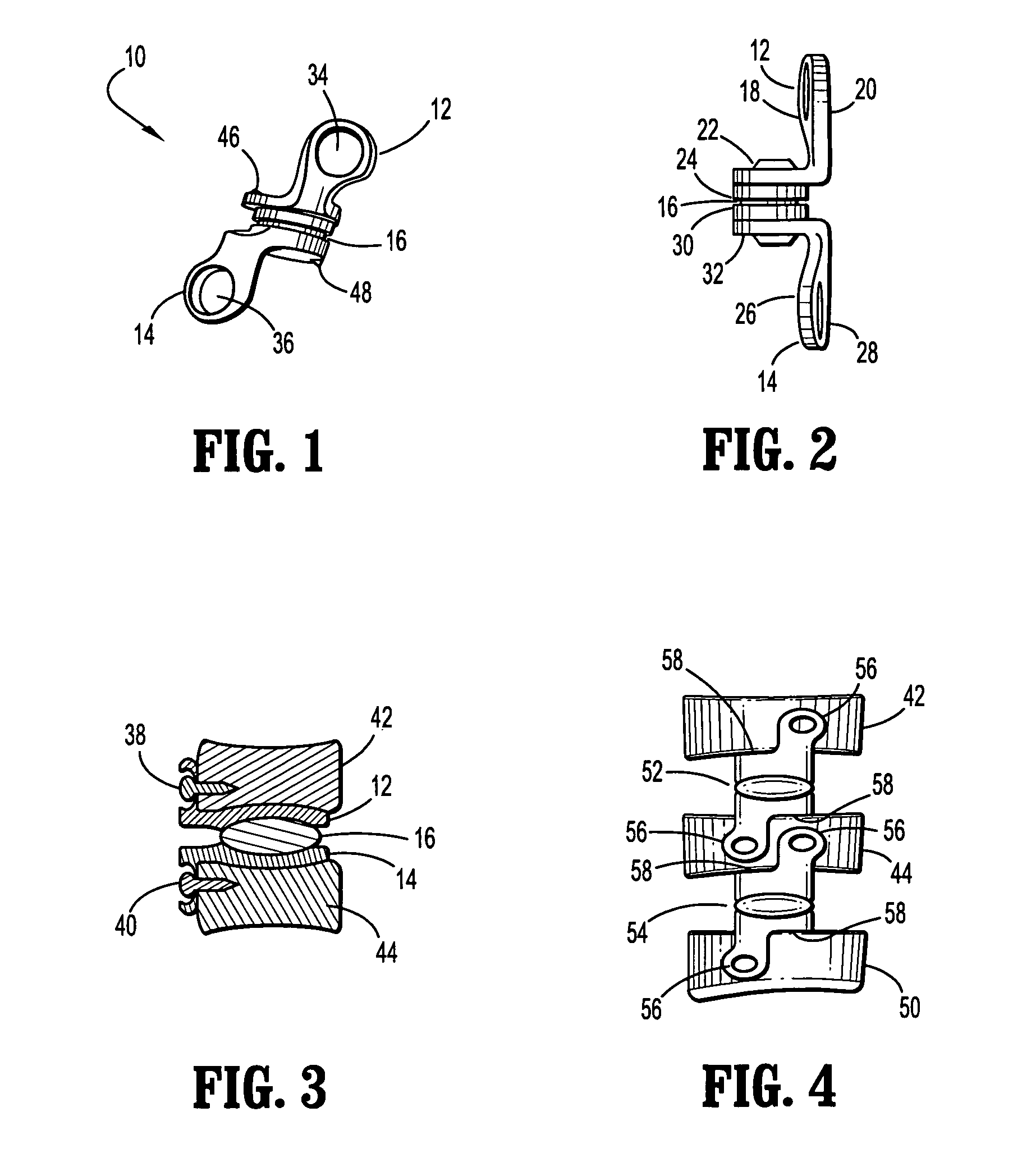Cervical motion preservation device
a motion preservation device and cervical spine technology, applied in the field of implantable artificial joint assemblies, can solve the problems of prohibitively complex or expensive components, adversely affecting the disc adjacent to the fused joint, imposing heightened stress and wear, etc., to achieve maximum contact area, facilitate controlled movement of adjacent vertebrae, and maximize surface contact area
- Summary
- Abstract
- Description
- Claims
- Application Information
AI Technical Summary
Benefits of technology
Problems solved by technology
Method used
Image
Examples
first embodiment
[0030]A first embodiment assembly according to the present invention is described with respect to FIGS. 1-4. An implant assembly (10) according to the present invention comprises an upper part (12), a lower part (14), and a center core (16). The upper part (12) comprises a vertical section front face (18), a vertical section rear face (20), a horizontal section top face (22), and a horizontal section bottom face (24). The lower part (14) comprises a vertical section front face (26), a vertical section rear face (28), a horizontal section top face (30), and a horizontal section bottom face (32). Each of the vertical sections of the upper part (12) and the lower part (14) comprise at least one fastener hole (34, 36). Each hole (34, 36) is adapted to receive a fastener (38, 40) such as a bone screw.
[0031]The horizontal top face (22) of the upper part (12) and the horizontal bottom face (32) of the lower part (14) are each preferably convex in shape to match the anatomical shape of the ...
second embodiment
[0035]the present invention assembly (100) is shown in FIG. 5 having an upper part (102) and a lower part (104) in which respective fastener holes (106, 108) are elongated. Such elongation of the holes (106, 108) may b e used for relieving stress by allowing relative movement of the upper or lower part (102, 104) with respect to a fastener (not shown) which attaches the assembly (100) to bone structures. The elongated holes (106, 108) may also provide versatility in positioning with respect to limited fastener positions during installation. It is understood that such elongated or slotted holes (106, 108) may be provided on one or on both parts (104, 106) in any of the preferred embodiments described herein.
[0036]Another embodiment of the invention, shown in FIG. 6, is directed to an assembly (200) having an upper part (202) and a lower part (204). The upper part (202) is generally similar to the upper part (12) in the first preferred embodiment. The lower part (204) is comprised of ...
PUM
 Login to View More
Login to View More Abstract
Description
Claims
Application Information
 Login to View More
Login to View More - R&D
- Intellectual Property
- Life Sciences
- Materials
- Tech Scout
- Unparalleled Data Quality
- Higher Quality Content
- 60% Fewer Hallucinations
Browse by: Latest US Patents, China's latest patents, Technical Efficacy Thesaurus, Application Domain, Technology Topic, Popular Technical Reports.
© 2025 PatSnap. All rights reserved.Legal|Privacy policy|Modern Slavery Act Transparency Statement|Sitemap|About US| Contact US: help@patsnap.com



